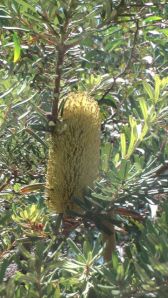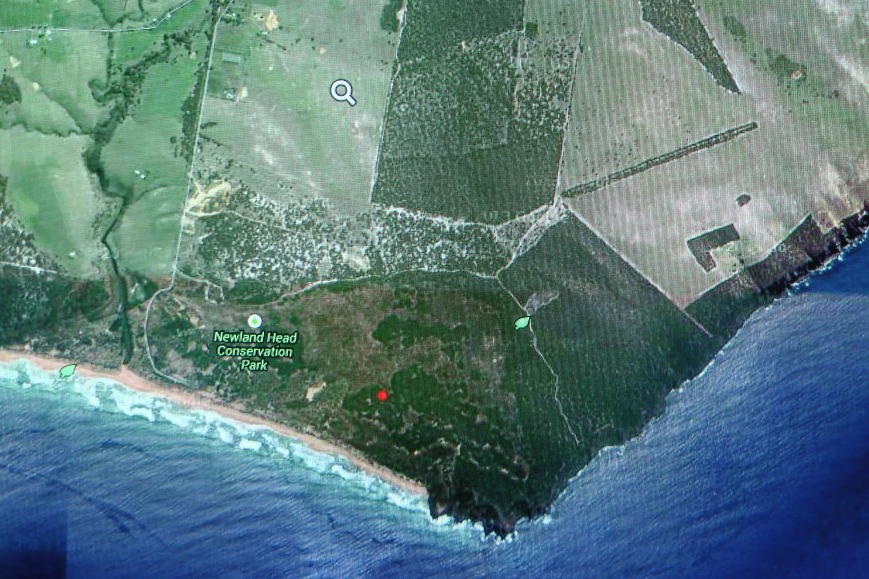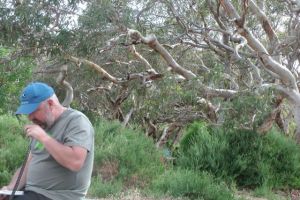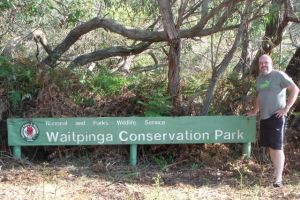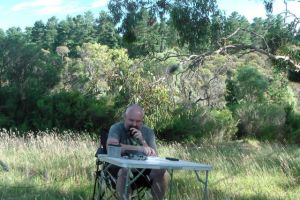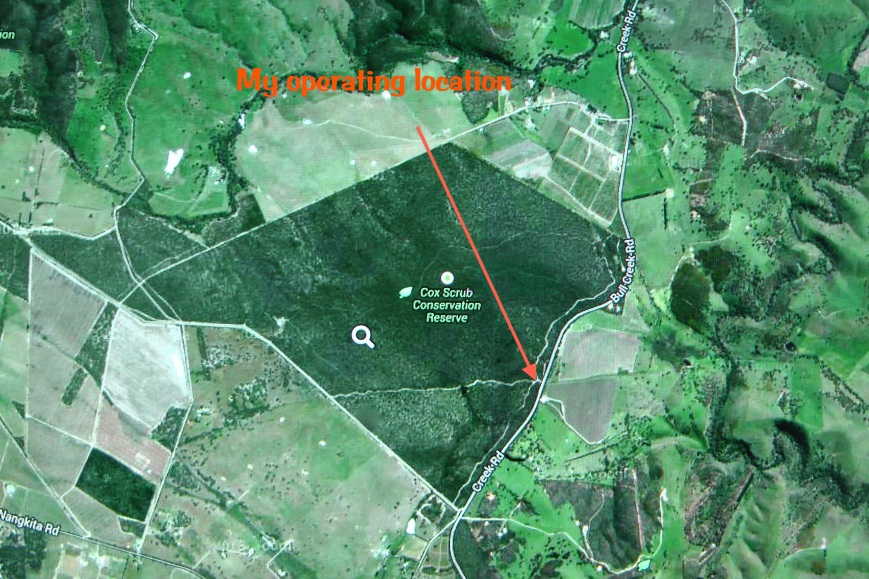Mount Billy Conservation Park was my last activation for the 3 days away. It is just a few km south east of the Spring Mount Conservation Park, off the Hindmarsh Tiers Road.
Courtesy of: http://www.mapcarta.com
Mount Billy Conservation Park is 199 hectares in size and represents some of the best preserved mallee and forest within the southern Mount Lofty Ranges. The Hindmarsh Valley Reservoir can be located on the southern side of the park. The Mount Billy summit is also located in the southern section of the park (sadly not a SOTA summit). I have not been able to find a reference as to how the park/summit was named. The thick under storey of the park and the many creek lines provide habitat for numerous bird and animal species including the endangered Bassian Thrush, Chestnut-rumped Heathwren and the rare Southern Brown Bandicoot. The Heath Goanna can also often be spotted, basking in the sun.
The scrub within the park is very thick, but there are two trails which takes you around the park: Banksia Hike (2.6 km), and the Mount Billy Hike (4.7 km). Many of the native plants were out in flower whilst we were in the park, including a number of the Banksia species. The park is full of Pink Gum, Blue Gum, Cup Gum, and Woodland Sheoak. During spring, flowering orchids are found on the forest floor.
Just down the road from the park is the old Hindmarsh Valley school building which was established in 1867. It is a beautiful old building and well worth stopping to have a look.
We found a nice operating spot, just inside the park gate on the Hindmarsh Tiers Road. There was plenty of room to set up the table and chair, and extend the legs of the dipole. The only down side were the large sand ants. They pack a bite with a lingering sting, as I found out.
My first contact in the park was with Graham VK5KGP at nearby Victor Harbor, followed by Larry VK5LY in the Riverland, and Col VK5HCF operating qrp 5 watts, and Tim VK5AV from the south east. Ian VK5CZ who was portable in Wirrabra Forest on his Elecraft KX3, came up to say goodmorning. Greg VK2FGJW/1 called in again from SOTA peak, Black Mountain, VK1/ AC-042. I think Greg may have been infected by the deadly SOTA bug. Because the noise floor in the majority of the parks is non existent, you can work the weakest of stations. So it is always pleasing to get some calls from QRP stations. In Mount Billy I worked Col VK5HCF, Luke VK3HJ, and Ian VK5IS, all of whom were using QRP 5 watts or less. I managed a few more interesting QSO’s including Kevin VK3KAB who was portable on SOTA peak Trapyard Hill,VK3/ VT-005, Andrew VK3BQ who was in Mount Kosziusko National Park, and Steve VK3JY who was operating QRP with his Elecrat KX3, from his holiday home at Lake Eildon. Unfortunately Steve was just outside the boundary of the National Park. I felt a bit guilty that I had run our of time to try 20m from the previous park (for some of the further afield VK’s who chase Parks), so I headed over to the 20m band hoping to get some further afield VK’s. I called CQ for a while but there were no takers. So I tuned across the band which was virtually empty, except for Peter VK3ZPF who was calling CQ from SOTA peak, Mount Matlock, VK3/ VC-001. After speaking with Peter, I was called by Dennis VK4SX, and Stu VK4SDD, both of who had great 5/9 signals coming in from Queensland.
Well it was time to pack up and the end of 3 days of parks activating. I had a total of 24 stations in the log for this park on 40m SSB and 20m SSB. It seemed the VK5 National & Conservation Parks Award was quite popular and was attracting some attention, which was great. I worked the following stations:- Graham VK5KGP/p; Larry VK5LY; Col VK5HCF; Tim VK5AV; Brian VK5FMID; John VK5DJ; Ian VK5CZ/p; Nev VK5WG; Tom VK5EE; Shaun VK5FAKV; Luke VK3HJ; Barry VK5BW; Greg VK2FGJW/p; Ian VK5IS; Kevin VK3KAB/p; Bernard VK3AMB; VK3BQ/2; Dave VK3VCE; Steve VK3JY/p; Phil VK3BHR; Peter VK3PF/m; Peter VK3ZPF/p; Dennis VK4SX; and Stu VK4SDD. References. Department for Environment and Heritage, 2011, Parks of the Fleurieu Peninsula Mapcarta, 2013, viewed 30th December, 2013, <http://mapcarta.com>



